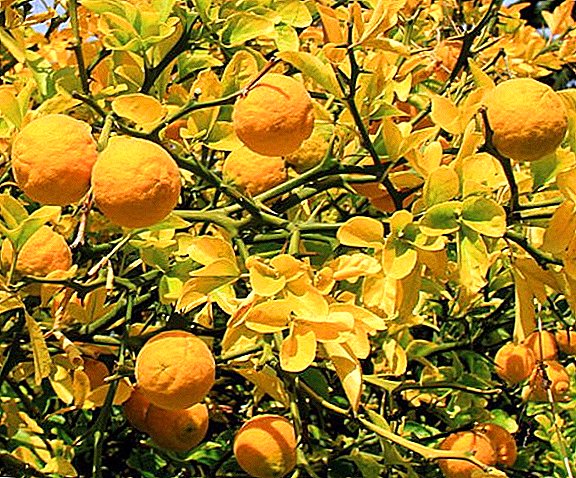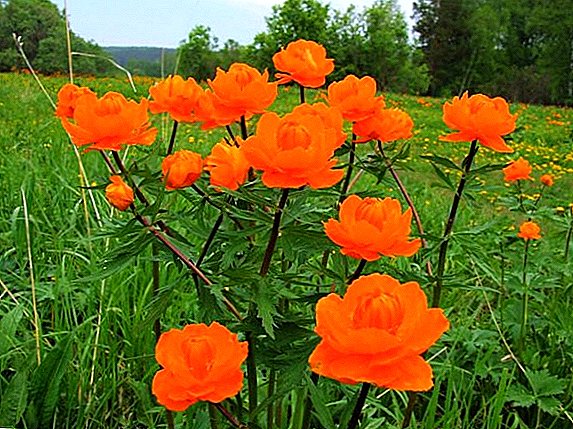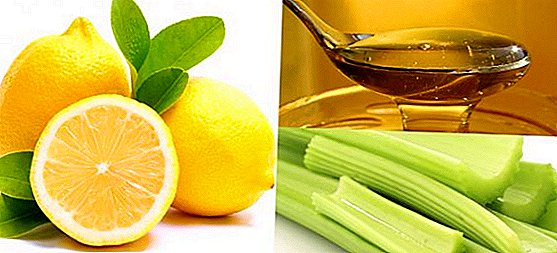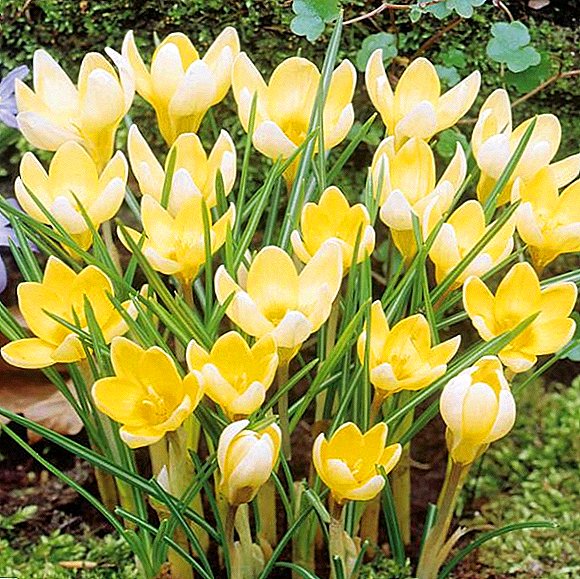 Crocus, also known as saffron, has long been used both for the production of expensive spices of the same name and for producing orange dye. But he is no less famous as an ornamental plant. One of these decorative varieties is Crocus "Romance".
Crocus, also known as saffron, has long been used both for the production of expensive spices of the same name and for producing orange dye. But he is no less famous as an ornamental plant. One of these decorative varieties is Crocus "Romance".
Description and photo
This variety is derived from the wild-growing species Saffron Golden (Crocus chrysanthus), which belongs to the genus Saffron (Crócus), belonging to the Iris family (Iridaceae). The species grows on the Balkan Peninsula, where it can be found in the highlands - in meadows, slopes, in forests. Note that the Latin name "crocus" is usually used in decorative floriculture.
Did you know? Saffron is one of the most expensive spices in the world. In 2014, the cost of a kilogram of saffron reached about 2 thousand US dollars. The spice is obtained from the flowers of the species saffron.

Variety "Romance" (Romance) is considered one of the most beautiful crocuses. This herbaceous perennial plant with goblet flowers with a diameter of about 3 cm, painted in delicate golden yellow color. The bulb has a spherical shape, the leaves are narrow, with a silver-white central vein. The height of this variety does not exceed 10 cm. The blossom "Romance" begins in spring. The beginning of flowering depends on the air temperature, it usually occurs in March-April. Duration of flowering - about ten days.
Check out the most common types of crocuses.
Reproduction and planting
Breeding crocuses varieties "Romance" does not present any difficulties and on the strength of any gardener. They can breed by children (daughter bulbs) or seeds. Usually for breeding "Romance" is used the first method.
Did you know? In the era of antiquity, crocus saffron was considered a very effective aphrodisiac. In addition, he was part of the medical fees used to treat melancholia.

When to plant
The bulbs of this variety, like all crocuses, blooming in spring, are planted in open ground in autumn, usually in September.
Bulb selection
When buying or selecting bulbs for planting should pay attention to their appearance. First of all, they should not have mechanical damage, regrown shoots or roots. To touch healthy bulbs seem dense and dry.
Ground Requirements
Ideal for crocuses is light sandy or loamy soil that provides, very importantly, good drainage. Sour and wet soil the plant is not suitable. 
Planting crocuses
Before planting bulbs the primer needs to be prepared. Poor soil is fertilized with rotted manure, compost, and peat with lime. If necessary (if the soil does not pass moisture well), coarse sand or gravel is added to it and the planting area is dug up to a depth of about 30 cm.
For disinfection of bulbs using a weak solution of potassium permanganate or fungicides. Planting material is immersed in such a solution for 30 minutes, after which it is sown in the ground. For small bulbs, planting holes of 4-5 cm in depth are required, the largest ones are planted to a depth of 12-15 cm. It is believed that the depth of the hole corresponds to a triple height of the bulb. The distance between individual plants during planting is approximately 5 cm.
Important! Bulbs that have not been disinfected before planting are often affected by fungal diseases.

Growing rules
Growing "Romance" does not cause much trouble, but you need to take into account some points so that the plants are healthy and bloom beautifully.
Place for "Romance"
For flowering crocus "Romance", as well as any other variety, the correct selection of the landing site is important, which simplifies the subsequent care of it. The best development of the plant provides sunny, well heated area. It is also desirable that this site was a bit elevated.
It was young, carnation, aster, thyme, bell, jascolk, stonecrop, edelweiss, sage (salvia), geykhera and yarrow, as well as the romance of the variety Romance, light-loving perennial plants that will feel fine in the beds under the constant influence of direct sun rays.

Important! In a shaded place, the crocus may bloom, but its flowers will not open completely, or even not at all.
Plant Care
As a rule, crocuses do not need watering. Moreover, excessive watering can lead to the death of plants. However, if the winter was snowless and the spring is dry, they are watered once when the buds appear and when the leaves form. If you do not, the period of flowering plants will be reduced.
Crocuses are fed with potash, phosphate and to a lesser extent nitrogen fertilizers. The first time this is done when sprouts appear. Potassium and phosphate fertilizers are used. When buds are formed, fertilize with phosphate fertilizers only. After flowering is completed, they are fed with potassium and nitrogen preparations.
Learn more about how to plant and care for crocuses correctly.

Transplanting is required every 4-5 years. This is done in the summer during the rest period, when the seeds ripen and the ground part of the plant begins to fade. The bulbs extracted from the soil are inspected and selected for further use. Selected specimens are stored until the next landing.
Over time, a dense accumulation of bulbs is formed from the separated babies. It is desirable to seat such a nest annually, as its inhabitants prevent each other from developing normally.
Important! Shallow planting of bulbs leads to accelerated formation of children.
Diseases and pests
The big lovers of crocus bulbs are mice. Special landing boxes made of fine-meshed (5x5 mm) nets help from this disaster. In addition, they use poisoned baits for mice, and on top they protect the bulbs with thorny branches. A cat helps well in exterminating mice, but in this case it is impossible to use a poison.
Plants can also attack caterpillars, aphids and slugs. Caterpillars and slugs are usually collected by hand. Aphids are fought with insecticides. 
Plant diseases can be caused by nutritional deficiencies, poor drainage or vectors, which are aphids. When viral diseases appear whitish spots on the flowers and leaves are deformed. In this case, it is recommended to destroy the affected plants. The fungus is parasitic on tubers. To combat it, the bulbs are treated with a solution of potassium permanganate or a fungicide.
Summing up, we can say that the cultivation of the crocus "Romance" is no different from the cultivation of other spring varieties. Care of this primrose is simple, and its blooming in early spring will delight any connoisseur.












